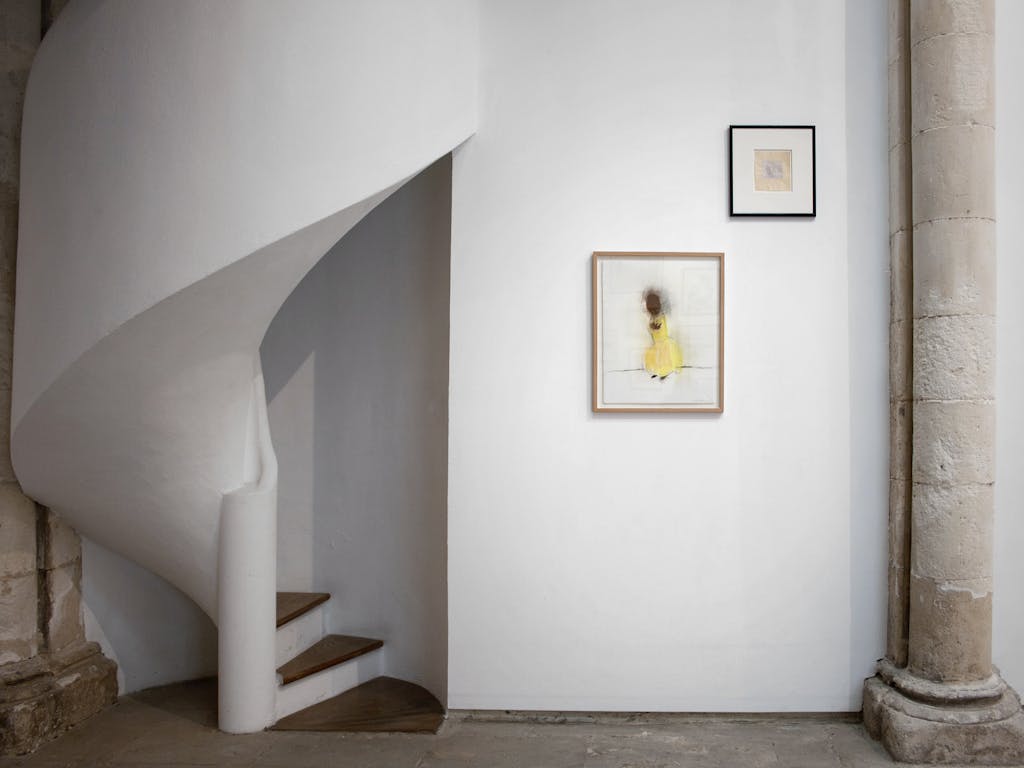The period of the works exhibited takes as its starting point, three work of Francis Picabia (1879-1953) from the beginning of the 1920s, jumping to the 1970s with a Chinese ink drawing by Marcel Broodthaers (1924-1976), until we find ourselves in the more recent present.
Markus Lupertz (*1941) is represented by black and white acrylics with a bird of prey motive, could be in dialogue with the birds of the Mallorcan based artist Marcelo Viquez (*1971).
Along with Viquez, Ralf Ziervogel (*1975) and Pepe Vives are the youngest artists in the exhibition. Initially barely visible, Ziervogel, with a detailed drawing technique and authentic watermark, of the moment of a tear in the human body.
In contrast, there are works full of humor by Victor Pivovarov (*1937) and his son Pavel Pepperstein (*1966), important representatives of the old and new generation of Muscovite conceptualism.
Paper houses by Sandra Vásquez de la Horra (*1967), and Ivan Bazak (*1980) are works in which both artists, in their own particular way, turn the paper into a three dimensional sculpture.
In a series of 12 works, Imi Knoebel (*1940), in a play of red and black dynamic strokes, puts to the test pictorial medium - color, shape and line.
The sculptor and multimedia artist Mallorcan Bernardi Roig (*1965) is exhibiting for the first time in Kewenig. His artistic work always focuses on the representation of the human body, which distances itself through elements such as light, fire, ash and charcoal.
In addition, the exhibition presents work by Curtis Anderson, Erik Andriesse, James Lee Byars, Astrid Colomar, Marlene Dumas, Nina Hoffmann, Leiko Ikemura, Ilya & Emilia Kabakov, Bernd Koberling, Jannis Kounellis, Marie-Luise Lebschik, Stephen McKenna,
Yola Minatchy, Maki Na Kamura, Miroslav Tichý, Niele Toroni, Rosemarie Trockel and Peter Wüthrich.
The installation of each work at different heights in the Oratory, enhances the levity of the works by creating a rythmic framework.
The contents of the existential, works against the specific space, making the visitor enter into a multiple sustained dialogue between the works themselves, the space and its history.
